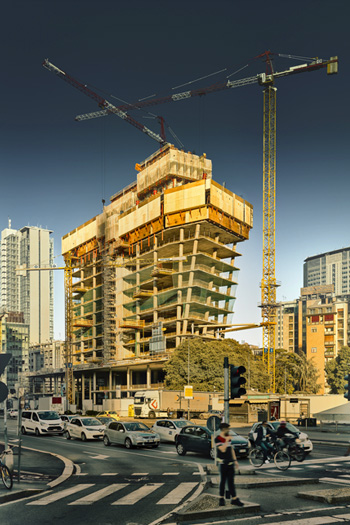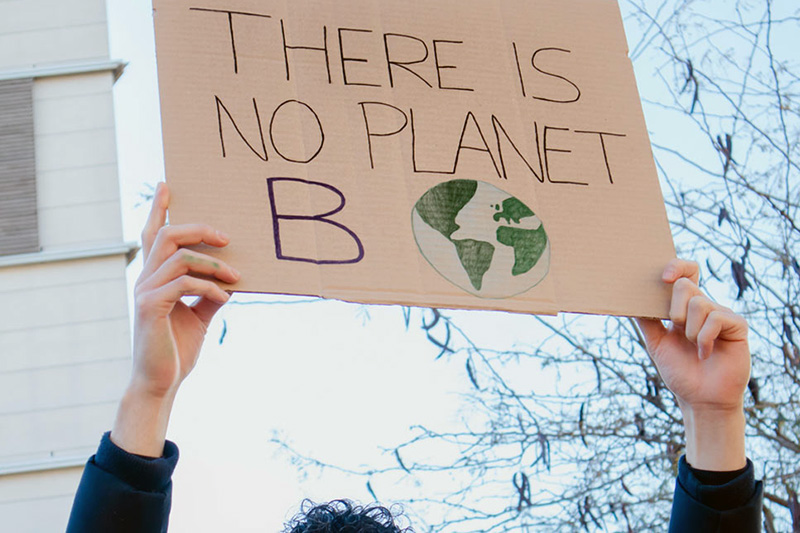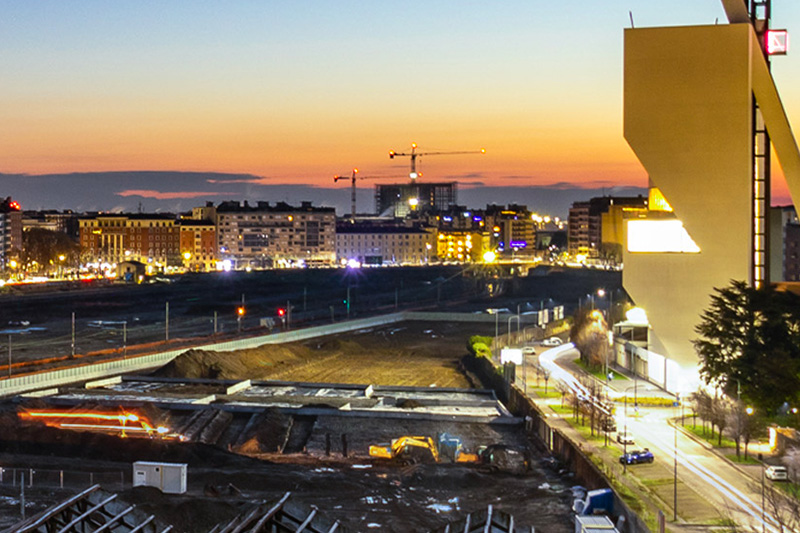“The city is a living organism that must be guided through its dynamics of transformation, not least by listening to those who have helped to build it in both a figurative and a literal sense. The main challenge that Milan is now facing in the regeneration process is finding the right ‘tone’ for discussion and exchange: without this foundation, we will never be able to build anything stable for the future”.
Regina De Albertis, President of Assimpredil ANCE - the Association of Construction and Ancillary Companies in the provinces of Milan, Lodi, Monza and Brianza - is crystal clear about the challenges and opportunities that the construction sector will come up against over the next few months, in what is set to be a particularly complex phase at both national and international levels.

Regina De Albertis, President of Assimpredil ANCE
“There is no doubt that geopolitical uncertainty and the ongoing war in Ukraine have only exacerbated the existing issues in supply chains, resulting in a slowdown in the global economy. This situation has a severe effect on the construction supply chain, which we know to be interconnected with over 80% of all production sectors, including in Italy,” De Albertis points out. “The latest estimates for our country’s GDP from the Bank of Italy from last July suggest reduced growth of 3.2% for 2022 and 1.3% for 2023”.
An economic climate that also results in a significant impact on the construction sector: “Investment in the sector, following the extraordinary growth seen in 2021 (+20.6% on the previous year), has maintained a positive volume of activity in the first quarter of 2022, even though as early as April this year, ISTAT demonstrated a declining production index for the sector, despite the encouraging results of the previous quarter”.
As the President sees it, the possible scenarios for the coming month present a puzzling paradox: levels of demand for property are growing, also thanks to the Super Ecobonus 110% stimulus and other tax incentives aimed at upgrading the building stock, “but for several months now, companies have been sailing without a compass, and banks are showing increasingly evident reticence in granting credit. As such, with large investments on the horizon and growing levels of household savings, we are being faced with an inability to plan tenders and acquire contracts because there is such an incredible degree of uncertainty that the players involved are proving very cautious indeed”.
Of course, the skyrocketing prices of both raw materials and energy play a central role in this: “there is no doubt that the measures implemented by the government to manage the energy crisis have only lent credence to our existing fears and concerns. If we see gas supplies rationed in the autumn due to rising energy prices, that would unquestionably spell economic disaster for the construction industry: all established business plans would be cancelled, and I fear that very few players indeed would dare to undertake new property development operations,” states De Albertis.
A scenario that could spell tragedy for the sector across most of the country, “yet potentially slightly less severe in Milan thanks to the area’s historically strong property investment activity. But developers and investors who purchased land and property and developed their business plans at an earlier point may find themselves facing serious difficulties with the new market situation.
See also: Milan, development and opportunities
This extremely complex situation comes at a time of immense stress for the construction sector, which is not only busy investing in process and material innovation, but also heading up the sustainable transition, as noted a few months ago at COP26 in Glasgow.
“Our sector has shared very little of how much it has achieved and how there are currently rapid and radical changes underway towards conscious production models, but we do all, of course, agree on the role of construction in guiding us towards new, more sustainable lifestyles. Innovation means changing and looking to the future. With this in mind, I can safely say that construction has a leading role to play in achieving goals 8 and 9 of the 2030 Agenda on Climate Change: long-lasting, inclusive and sustainable economic growth, full and productive employment, and dignified work for all, as well as fair, responsible and sustainable innovation and industrialisation. The regeneration of the built environment requires changing course on our approach to urban development with the environment and our habitat, mankind and work, the present and the future at the heart of any strategy”.

Gioia22, the biggest Italian NZEB building,
before its completion
In the words of the President, then, alongside the direct commitment that the sector is making in terms of work, construction is becoming the primary driving force for the transformation and regeneration of the territory, welcoming stimulation and influence from the outside world: “I can confirm, based on my experience with my company, that a great many of us are working hard to push the business outside its comfort zone, with the aim of thinking about projects and production models in a new, sustainable way, targeting a structural change in the very DNA that makes up these companies: this is, without a doubt, an innovation that is revolutionising the sector. After all,” continues De Albertis, “the Milanese construction sector has helped to establish a sustainable development model which, whilst always ripe for improvement, still represents a point of reference for the country - and one which we intend to follow through on as Assimpredil Ance. Combating issues such as contract evasion, illegal and undeclared work remains one of the highest priorities, but it is equally crucial to help companies to adjust to change, to fight the difficult battle of fair competition, skill development and innovation”.
See also: The Recovery Fund will improve our cities
Assimpredil Ance’s commitment continues as strong as ever over the next few months: “I would like to introduce you to a new sustainability-related initiative that we are preparing to launch very soon: Cantiere Impatto Sostenibile [Sustainable-Impact Construction Sites]. This is a programme aimed at implementing sustainable development and a voluntary ‘code of conduct’ rooted in eight areas of commitment, with three levels of increasing complexity for each area. Anyone who joins the scheme undertakes to organise their construction sites in accordance with the company governance’s commitments to the environment, decarbonisation, legality, work, safety, social engagement, and supply chain quality”.
A project that aims to represent a tangible means of transitioning from a linear to a circular economy and which, for construction companies, “implies the need for a fresh approach to the construction phase, one that meets the ESG criteria demanded by clients, investors and developers alike”.
See also: Cradle to Cradle
In conclusion, the future that Regina De Albertis envisions for the sector must start with an acknowledgement of the effects of past choices: “we, as a construction system, must admit that our record has not always been impeccable, but we have always sought to learn from our mistakes.
In Milan, but also in Lodi and Monza, we have worked with local administrations to build a network that shared one goal: sustainable growth based on a pact of confidence between the public and private sectors. Now, there is only one way forward: what we design and build today must be a net positive - in other words, it must improve the quality of the living and working conditions that our children and grandchildren will see in the future”.




